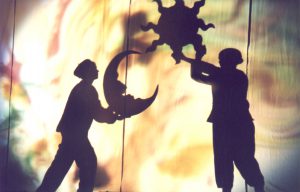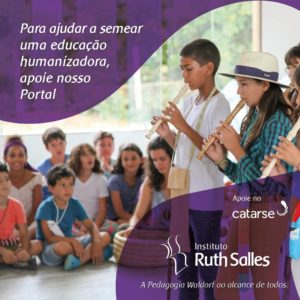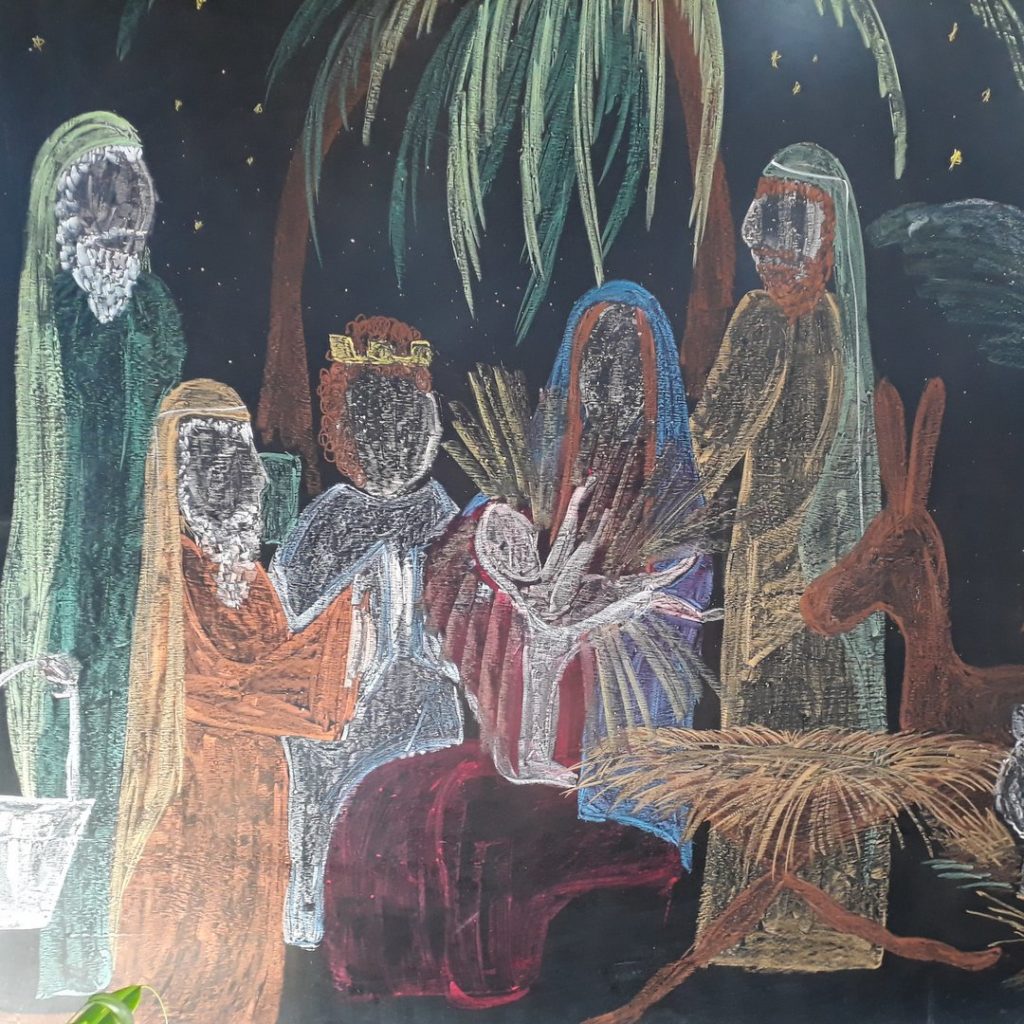 Young people between 12 and 13 years old
Young people between 12 and 13 years old
By Cristina Maria Brigagão Abalos, Dora Regina Zorzetto Garcia and Vilma Lúcia Furtado Paschoa.
Around the age of 12, the young person enters a period of profound transformations, both physically, emotionally and intellectually. On the physical level, pre-puberty begins, characterized by the gradual loss of bodily harmony; the movements begin to become angular and unsteady, the limbs lengthen and, at the same time, great energy and vitality are manifested, especially in boys, who need to get rid of excess forces, whether in more dynamic sports or in physical confrontations with each other or with older boys. The gap between boys and girls grows wider and wider. Girls' behavior fluctuates mainly due to sentimental and emotional experiences.
At the same time, a desire to conquer the world begins to emerge in young people, a certain experience of their own power, which gives rise to fetched and unrealizable projects.
There is a great curiosity to know how everything works, where everything comes from, what are the general principles that govern the Earth and what exists in it, and it is at this age that one seeks to understand through reason, logic.
How to deal with all these simultaneous transformations?
The educator's task is to lead the young person to the autonomy of judgment, to make him capable of judging reality, so as not to be defenseless and subject to all kinds of external influences.
Care must be taken to ensure that judgments are not hasty, stiffening the developing concepts and often leading to distortions and prejudices. Therefore, it is suggested that the descriptions and presentations of the subjects are always very rich, broad, alive, including the students' personal experiences and activating reflections through open questions. It is only after a retrospective made the following day, with the addition of new aspects derived from the approach of the previous day, that space is given for considerations based on the laws of cause and effect. This will provide the development of logical reasoning before conclusions and the achievement of a lively and flexible way of thinking.
It is only from the age of 12 that young people are mature enough to understand, on the one hand, the role of man in the physical world with its dynamics and mechanics, and, on the other hand, the historical relationships and the impulses that develop them, the coming to be social. Such impulses are heated by feelings and condensed by life stories, biographies of men who lived the events characterized. It is suggested that the study of a historical period be done through the experience of characters of the time, with which the student easily identifies and that awakens in him the possibility of admiration, which is no longer so easy to satisfy at this age.
The study through a biography is not restricted to the simple narration of someone's life, but to the construction of a broad image of this being, so that he lives within the young and the world is seen from his vision. Figures as different as Pompey and Caesar can be contrasted in the study of Rome. Without making judgments, it is suggested to characterize cultures with detailed descriptions. In the teaching of History, other subjects can be integrated.
It is also suggested that physical phenomena be described and that experiments be carried out.
In the emotional realm, feelings become more exacerbated, turbulent, often out of control. Everything that has been exercised and developed previously in terms of order and organization seems to fall to the ground. Many run away from responsibilities, are reluctant to grow up or are opposed to adults, wanting to face them, to challenge them. Leisure and social contacts become more important than anything else, and feeling that they belong to a group is fundamental to them.
Uncontrolled emotional states require a deep understanding on the part of the educator. It is necessary to have calm, exemption from judgment and lightness to deal with the situations that present themselves in everyday life. A good dose of humor is also necessary for everything to be resolved in a positive mood. Cooperation and interaction between teachers dealing with the same class are fundamental.
The young person seeks, in the adult, coherence, guidance and help based on knowledge of the real world. However, the adult must know how to dose the explanations. The students themselves are demonstrating how far they can get. This means that dialogue must be a constant in the classroom, and the teacher's main work material is what the student presents as the result of his perceptions, observations and reflections. The teacher organizes all this and makes possible an advance in the study content.
The young person is now also very receptive to agreements and negotiations, which is a precious resource in the relationship with the adult. This will help him to free himself from the authority of his elders and to develop respect for the authority of the laws. It is important to maintain a rhythmic activity at the beginning of each class day, so that the students, as a class, are harmonized and prepared for the content that will follow. To compose this activity, recitations referring to the ancient civilizations that are being studied are suggested. Such recitations, practiced regularly in previous years, must not fail to happen, even if the young man now feels a little more ashamed. The experience of styles and metrics, the expansion of vocabulary, the cultivation of speech and a cultured language, are some of the advantages of this practice. Many artistic activities can be carried out that express the content covered: modeling, drawings, paintings and dramatizations are very advisable, not as mere illustrations of teaching, but as a way of deepening the experiences and connecting the student to the subject of study. Dramatizations are especially suitable, so that the young person, through a character, has the opportunity to express feelings that become increasingly strong, contradictory and absorbing from then on. The different experiences exercise a certain flexibility, which can be threatened at this moment in life.
Young people can enthusiastically develop either a historical, realistic play or a fairy tale to be presented to younger children. They are more mature, and acting begins to acquire a much more artistic aspect, despite not losing the pedagogical and formative importance of the human being. For this very reason, developing a theme to be presented to younger children makes young people step outside of themselves and donate, exercising generosity.
Another experience that young people can obtain through theater, and which will be important for life, is the experience of an editing process that can last for weeks and require dedication and effort. Young people today tend to be short-sighted, to want everything ready and to get to the end of something as quickly as possible, whatever it takes. The assembly of a theatrical play with all its elements, in addition to being a collective work that develops the notion of group, cooperation and respect for the other, provides an immersion in the chosen theme, which is developed in various areas and aspects. This requires gradual and persistent construction work, which trains one's willpower.
There are some resources that can be used so that young people feel less exposed and can carry out their work with greater spontaneity, such as shadow theater and the use of masks.
Theater, for being a joint work, gives the young the feeling, so important for him at this moment, of belonging to a group but with responsibility, because each one has his part to perform so that the whole is formed.
THE THEATER BETWEEN 12 AND 13 YEARS
The power of achievement, inherent in every human being, intensifies at puberty. It is the adult's responsibility to direct it so that it leads to the development of values and the awareness of a role to play in the world. We believe these are the principles that should guide the choice of a piece for this age.
The careful practice of recitation, like the theater, can harmonize and clarify the young person's unstable emotional life, so the choice of play must also be sensitive to these demands.
The play “The Sacred Flame”, based on a medieval Christian legend, brings a strong symbolism that dispenses with any moralizing speech. Raniero's transformation, that is, the overcoming of pride and vanity – “With all caution, Raniero protects the candle flame. But the fire of pride grows in his chest for his great deeds” – it is not given by reason, by intellect, but by action in the world, by the performance of a task. – “My flame can never go out.” – Raniero's redemption took place through the action moved by the strength of the heart. Raniero, like any young man, felt insurmountable, but greater forces, the contingencies of life, slowed his impetus – “With a thousand rays! I didn't count on this! Against the wind my strength is worthless. I will have to ride much slower.” – The sacred flame that at every moment showed itself as a hindrance, it is itself that will save him – “If I had arrived as a knight, I would not be hosted by the innkeeper. If someone called me poor in the old days, I'd kill him right away. Blessed help… It's strange how everything changes…”.
The same force that drives a young man to heroic and selfless deeds can also lead him to destruction. He finds himself alone, tormented by the eternal dialectic between Good and Evil, expressed in the play by angel and demons – “You did not, however, have a candle in your hand (angel); Throw out the candle! (1st demon); Beat them to death! (2nd demon)”. It is Raniero who has to decide, nobody else – “With a thousand rays! Only now do I understand the situation. It’s the flame I have to think about first.”
Although the students are older, it is customary to tell the story of the chosen play before the introduction of the text. Thus, the contents and images reach the students by feeling, realizing the primary intention that is to harmonize and sensitize them. Only then is the text given for the various readings. In each of them, an aspect to be observed can be highlighted: the story itself, the development of each character, the environment of the play, the different scenes, etc.
We also work on rescuing the formal language, where the vocabulary is more elaborate, the dialogues are longer, the between the lines gain relevance.
After a first familiarization with the text, it is possible to begin the laboratory work: a certain scene is chosen and the students are asked to represent it, in groups, sometimes with a melancholy tone, sometimes with a heroic or ironic tone. Such experiences help to awaken to deeper intent and meaning, for meaning goes beyond the meaning of words. The different proposals are presented and commented on, seeking consensus on the most appropriate. Work continues on improving the chosen interpretation. In this way, the expression of the characters results from recognition, from an internal experience, and is not imposed by the teacher.
The composition of the costumes can follow the same line of experimentation, that is, the students, individually or in groups, do research on the clothes of the time and complement with suggestions that come from laboratory experiments. They then present drawings as costume proposals.
In the piece “A Chama Sagrada”, one can work in these two directions: the human characters would wear medieval costumes, characterizing the condition of each one of them, especially through the fabrics used: satins and velvets for nobles and knights, more rustic fabrics for the people's characters. The other characters, Angel of Light, demons and personified wind, can escape the conventional characterization, gaining a more suggestive configuration with cloths, colors, masks, etc.
The choir may be dressed in brown robes, bringing the idea of a single body.
All the work with the costumes is highlighted in the composition of the scenery and in the scenic movement.
This piece favors the montage of shots: Francesca, placed in a corner of the stage, in a shot a little above the one in which the scenes take place, in a more secluded environment; the Angel of Light occupies the highest plane, while the demons would be on a lower plane, although they sometimes approach Raniero and even address the Angel. In the middle plane, the plot takes place.
The choir walks across the stage en bloc like a procession during their speeches, expressing their omniscience of past events and the story now unfolding.
Large fabrics hung and tied in different directions forming pleats and volumes are a good resource for creating and separating environments.
At this age, students are already able to contribute to the scenic composition, painting on fabric, cardboard or plywood parts of the scenery such as houses, trees, doors, windows, etc.
A play of lights can complement and enhance the scenery.
In addition to singing and instrumental music typical of the time, students can also take care of sound design.
As you can see, this is a job that requires a lot, and the partnership with teachers from similar areas, such as Arts, Music and Dance, is fundamental.
In the distribution of roles, the teacher can choose more than one student to be Raniero, or to be Francesca, or even the Fool. They intersperse during the play or perform on stage at the same time.
Now the part is assembled. The most important thing has already happened: the process. It is primarily in it that students learn and mature. The presentation is the concrete expression of a long and arduous group work, overcoming challenges and fulfilling goals.
***



